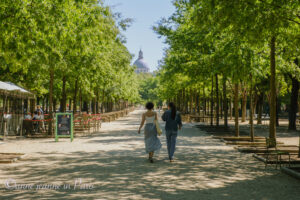WHO AM I ? my BIO
The “bouquinistes’ (= Paris’ traditional bookstall sellers) line the banks of the Seine.
This is the largest open-air bookshop in Europe . Strolling past the green boxes browsing books and prints, is a genuine pleasure and one of the most iconic experiences in Paris.
Paris wouldn’t be the same without them !
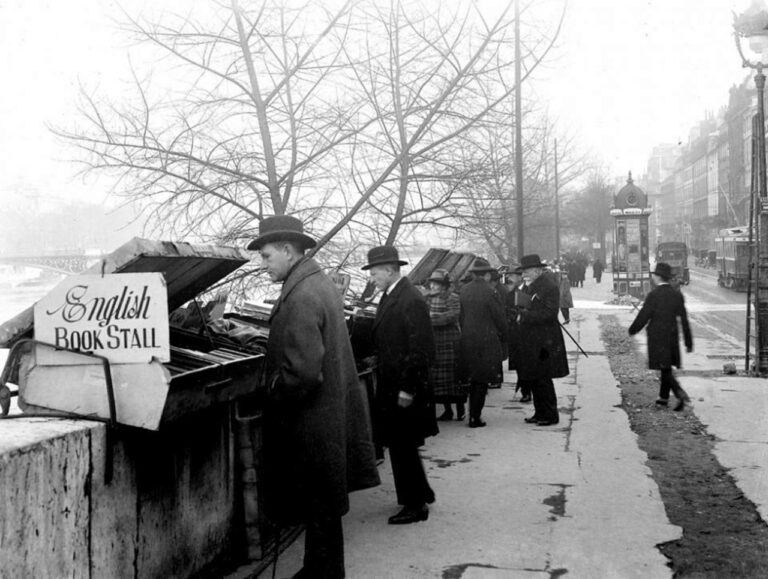
a bit of history
The tradition began in the 16th century. Back then, itinerant booksellers roamed the bridges and quays of the Seine, including the Pont Neuf, the oldest bridge in Paris.
In 1821, the first bouquinistes settled permanently on Quai Voltaire, installing their boxes for good.
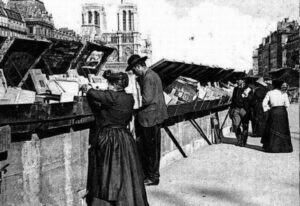
Hemingway and the bouquinistes
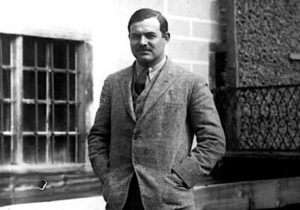
In “A moveable feast” Hemingway, writes about the bouquinistes. He often browsed and bought second-hand books from the stalls, especially on the Left Bank. He spent all his Paris years on that side of the river, first in the Latin Quarter, then Montparnasse, then Saint Germain des Prés, and finally in the southern part of Montparnasse.
Hemingway wrote :
“In the bookstalls along the quais, you could sometimes find American books that had just been published for sale very cheaply…if the people (in the Tour d’Argent’s rooms) who lived there left any books. Behind there was a bookstall not far along the quai where the valet de chambre sold them and you could buy them from the proprietress for a very few francs…. After that bookstall near the Tour d’Argent, there were no others that sold American and English books until the Quai des Grands Augustins” (A Moveable feast – Chapter 4 – People of the Seine)
Another famous customer was François Mitterrand, French president (from 1981 to 1995). He often browsed the stalls along the river on his way home to Rue de Bièvre, always followed by his two bodyguards!
some figures
- Around 1000 boxes, the Seine :
- 240 booksellers
- Almost 3 kilometers of riverbank
- Since the 16th century
- Over 300 000 items: books, magazines, prints, and more
- Open daily from late morning to sunset (usually from 11am). Then the “boxes are locked with padlocks each evening
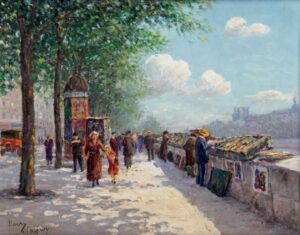
Where does the word "bouquiniste" come from?
The word bouquiniste comes from bouquin.
A bouquiniste is someone who sells bouquins!
This term appeared in the French Academy’s dictionary in 1762.
Bouquin doesn’t mean exactly the same as livre (the standard word for “book” in French).
Originally, bouquin referred to an old book.
Today, it’s often used informally to mean “book”, a bit like saying “a read” in English. It’s not rude of slang, but it’s more casual and less literary.
The word comes from the old Dutch boekin or boeckjijn (17th century).
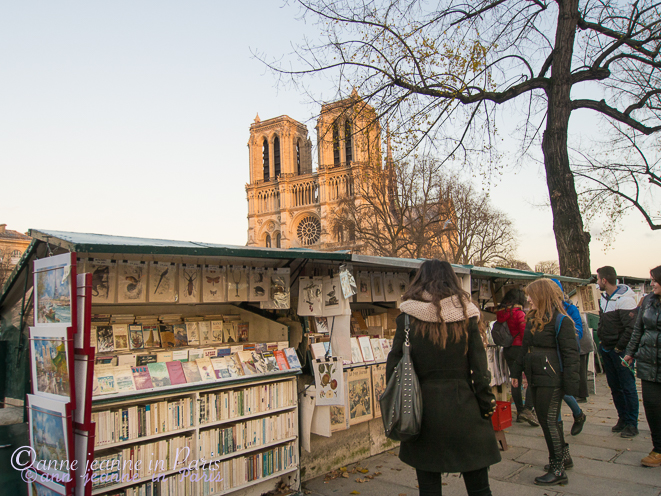
what do they look like?
The boxes are painted in a dark green known in French as : “vert wagon”, the color of old railway carriages.
The color has been officially required since 1891, to match other Paris street furniture like the Wallace fountains and Morris columns.
We call them : “boîtes” (= “boxes”). They’re metal boxes attached to the parapets of Seine’s quays, and since 1991, they’ve been listed as UNESCO World Heritage.
Box dimensions (set in 1930)
- Length : 2 meters
- Width : 0.75 meters.
- Space between boxes : 20cm.
- Maximum height when open: 2.10 meters above the ground
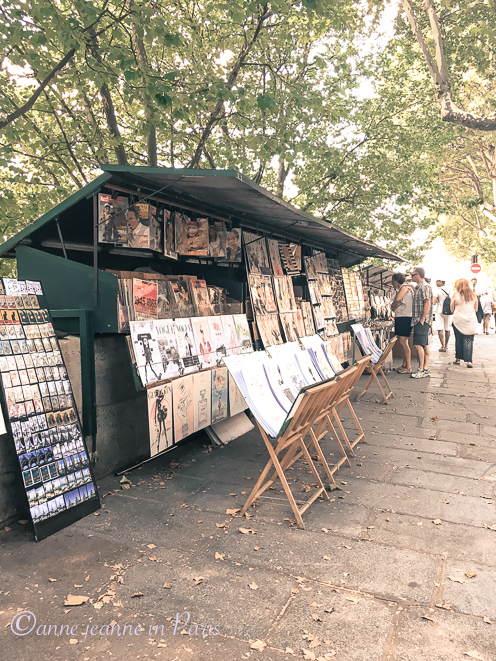
where to find them?
- Right bank: From Marie bridge (Paris 4 – Marais area – Metro: Pont Marie or Saint Paul) to Quai du Louvre – near the Louvre Museum)
- Left bank: From Quai de la Tournelle (Paris 5 – Latin Quarter) to Quai Voltaire (near the Orsay Museum and Rue du Bac)
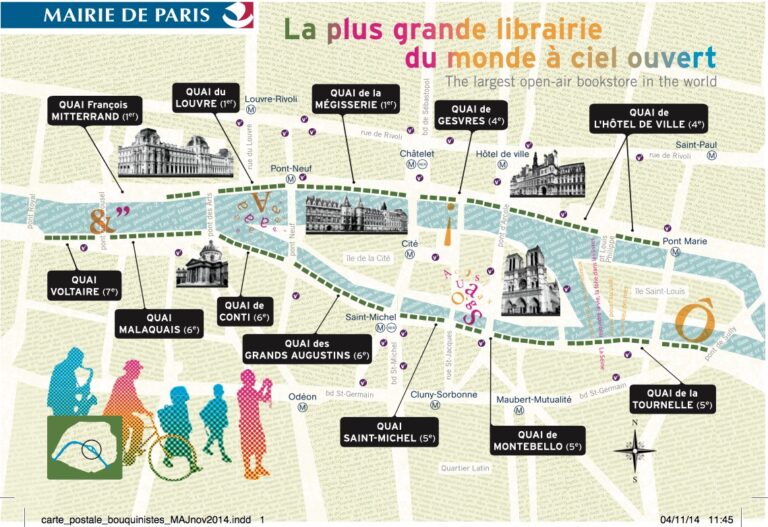
being a bookseller
Each bookseller is allowed four boxes (4×2 meters).
They pay no rent or taxes but must obtain a license from the City of Paris. This license is renewable each year, and sellers are required to open at least four days a week.
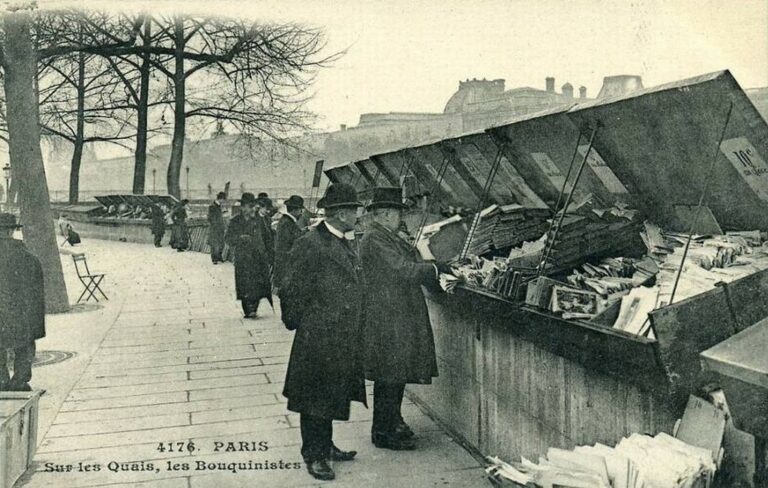
what do they offer?
Originally, and still today, they sell:
- Second hand books, including rare editions
- Prints, old magazines, old manuscripts, newspapers, photos
- Posters, and vintage postcards.
You’ll find books in French and in English.
Prices are usually displayed, even for rare and collectible, items, and you can often pick something up for just 1 euro!
With the rise in tourism, many stalls now also sell souvenirs (key rings, magnets etc.).
However, the city of Paris requires that at least three of the four boxes remain focused on books and printed items. Only 1 box may be used for souvenirs.
Each bookseller tends to have a specialty.
For example, one might cater to international visitors by offering vintage issues of National Geographic and English-language books, alongside French literature, science fiction, and detective novels.
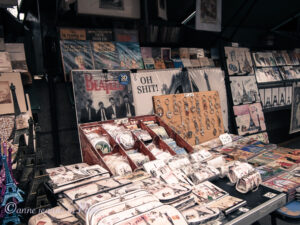
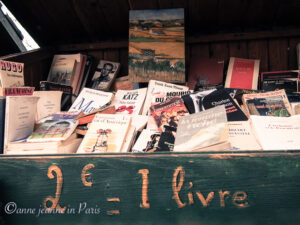


My recommendations
Combine your stroll along the bouquinistes with a walk through the “Latin Quarter” or a visit to the Sainte Chapelle (on Ile de la Cité), Notre Dame de Paris, the Orsay Museum, or the Shakespeare and Company bookshop.
My personal note : These bookstalls are truly part of Paris’ soul, though too often overlooked by both Parisians and visitors.
Whenever I walk along the Seine, I am reminded of the pleasure of browsing this giant open-air bookstore, with Notre-Dame de Paris, the Conciergerie or Le Louvre in the background.
It’s always worth slowing down and taking a look!
WHO AM I ? my BIO
Discover my SERVICES
My article: “I am not a tour guide I am Parisian (lol)“
More about me? :



